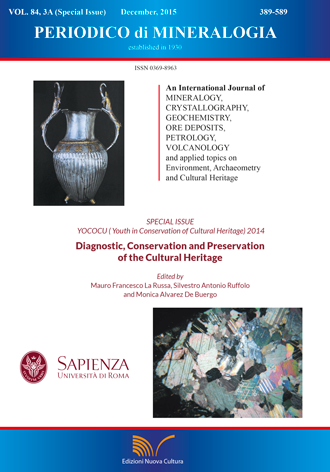The use of vitrum obsianum in the Roman Empire: some new insights and future prospects
DOI:
https://doi.org/10.2451/2015PM0026Keywords:
Roman glass, obsidian, XRF, Raman, SEM-EDX, non-destructiveAbstract
The research on the use of obsidian in the Mediterranean is extensive but this concerns almost exclusively the exploitation of volcanic glass from prehistoric and Bronze Age contexts. The consumption of obsidian during the Roman imperial period in contrast has only occasionally received attention. Never a comprehensive account on what the Romans made in vitrum obsianum has been set up, nor have the sources exploited by them been examined. The aim of the present paper is to provide a concise overview on the current knowledge regarding the use of obsidian during the Roman imperial period and to offer an introductory outline on potential research. The ancient writers inform us about the use of volcanic glass to create exclusive vessels, gemstones, mirrors and sculpture, but also about the creation of black appearing man-made glass initiated as a cheap and easier workable substitute. The archaeological data however propose a more complex story with the occurrence of obsidian chunks in early Roman secondary glass workshops, and the bulky use of obsidian in late Antiquity to produce tesserae for the creation of wall and vault mosaics. Within the Mediterranean three source areas have been recognized that have been responsible for the supply of obsidian in Antiquity: various Italian and Greek islands (Pantelleria, Lipari, Sardinia, Melos, Giali…) and eastern Turkey (Cappadocia, Lake Van district). For a more detailed research to establish the specific obsidian sources used by the Romans and define their distribution networks, the characterization of the obsidian architectural material offers many opportunities. Obsidian can be clearly discriminated from man-made glass by means of non-destructive chemico-physical analyses. A simple device such as portable X-ray fluorescence (XRF) can be used to determine the chemical obsidian of an object enabling a comparison with known glass/obsidian compositions. Raman spectroscopy is another useful technique to distictively seperate glass from obsidian and is applicable for in-situ measurements in museums and archaeological sites by means of a portable Raman spectrometer.


